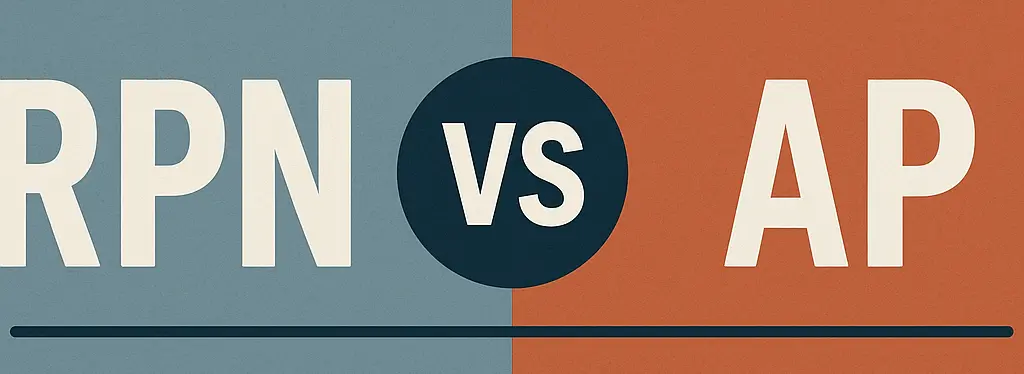In the old AIAG 4th edition FMEA (Failure Modes and Effects Analysis), risk was categorized using a Risk Priority Number (RPN). Now, the AIAG-VDA FMEA Handbook (2019) replaced RPN with Action Priority (AP).
Why? Because RPN had many weak points that lead to inconsistent and misleading risk evaluations. Whereas, AP gives us a more logical, consistent, and safety-focused approach.

What was RPN in FMEA? #
Formula:
RPN=Severity (S)×Occurrence (O)×Detection (D)
Range: From 1 (lowest risk) to 1000 (highest risk).
- Old Method: Teams would sort failure modes or risk by RPN and focus on the highest numbers.
Example of RPN Calculation
- Severity = 9 (High)
- Occurrence = 3 (Low)
- Detection = 5 (Moderate)
RPN=9×3×5=135
In the first place, RPN was simple. But the method has major mistakes.
Why RPN is Outdated (Problems with RPN) RPV vs AP #
1. Different Risks = Same RPN
- Example 1: (S=9, O=3, D=5) → RPN = 135
- Example 2: (S=5, O=9, D=3) → RPN = 135
But the first case involves high severity (safety risk), while the second is just frequent but less severe.
RPN treats them as equal, which is misleading and not fair risk analysis.
2. Focus on Multiplication, Not Meaning
- Teams often chased “big numbers” instead of addressing high-severity risks.
3. Hides Critical Failures
- A Severity 10 (safety issue) with low occurrence and good detection might result in a small RPN, but still requires immediate action.
4. Inconsistent Thresholds
- Different companies used different cut-offs (e.g., “RPN > 100 needs action”), leading to non-standard risk evaluations.
What is Action Priority (AP) in FMEA? #
The AIAG-VDA Handbook introduced Action Priority (AP) as a more accurate method to categorize risks.
- AP is based on combinations of Severity, Occurrence, and Detection, but instead of multiplying them, it uses a decision table (AP table).
- AP categories:
- High (H): Immediate action required.
- Medium (M): Action recommended.
- Low (L): Action may not be needed.
With AP, Severity is always the first priority. Even if occurrence is rare and detection is strong, if severity is high, the failure mode gets High Priority (H).
Example – RPN vs AP Comparison #
| Failure Mode | S | O | D | RPN | RPN Interpretation | AP Result |
|---|---|---|---|---|---|---|
| Brake system failure | 10 | 2 | 2 | 40 | Low RPN (Low / ignored risk) | H – Must have action (safety risk) |
| Cosmetic scratch | 3 | 6 | 5 | 90 | Medium RPN (action taken) | L – Minor, no action needed |
This shows how RPN is incorrect, while AP correctly prioritizes safety and customer impact.
Why Action Priority is Better than RPN #
- Focuses on Severity First – Safety-related risks are never ignored.
- Standardized Rules – AP uses a decision table (AIAG-VDA defined), consistent evaluation.
- Clear Guidance – AP results (High, Medium, Low) tell teams what to do.
- Globally Accepted – AP is now the official method in automotive FMEA (AIAG-VDA standard).
Key Takeaways #
- RPN = Severity × Occurrence × Detection : outdated and misleading.
- AP = Action Priority Table (High, Medium, Low) : modern, reliable, severity-driven.
- AP ensures that safety and customer-critical risks are always prioritized, regardless of occurrence or detection.
All new FMEAs should follow AIAG-VDA Action Priority (AP), not RPN.



